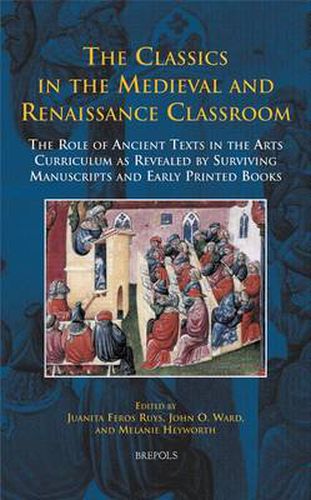Readings Newsletter
Become a Readings Member to make your shopping experience even easier.
Sign in or sign up for free!
You’re not far away from qualifying for FREE standard shipping within Australia
You’ve qualified for FREE standard shipping within Australia
The cart is loading…






Medievalists and Renaissance specialists contribute to this compelling volume examining how and why the classics of Greek and Latin culture were taught in various Western European curricula (including in England, Scotland, France, Germany, and Italy) from the tenth to the sixteenth centuries. By analyzing some of the commentaries, glosses, and paraphrases of these classics that were deployed in medieval and Renaissance classrooms, and by offering greater insight into pre-modern pedagogic practice, the chapters here emphasize the ‘pragmatic’ aspects of humanist study. The volume proposes that the classics continued to be studied in the medieval and Renaissance periods not simply for their cultural or ‘ornamental’ value, but also for utilitarian reasons, for ‘life lessons’. Because the volume goes beyond analyzing the educational manuals surviving from the pre-modern period and attempts to elucidate the teaching methodology of the pre-modern period, it provides a nuanced insight into the formation of the pre-modern individual. The volume will therefore be of great interest to scholars and students interested in medieval and Renaissance history in general, as well as those interested in the history of educational theory and practice, or in the pre-modern reception of classical literature.
$9.00 standard shipping within Australia
FREE standard shipping within Australia for orders over $100.00
Express & International shipping calculated at checkout
Medievalists and Renaissance specialists contribute to this compelling volume examining how and why the classics of Greek and Latin culture were taught in various Western European curricula (including in England, Scotland, France, Germany, and Italy) from the tenth to the sixteenth centuries. By analyzing some of the commentaries, glosses, and paraphrases of these classics that were deployed in medieval and Renaissance classrooms, and by offering greater insight into pre-modern pedagogic practice, the chapters here emphasize the ‘pragmatic’ aspects of humanist study. The volume proposes that the classics continued to be studied in the medieval and Renaissance periods not simply for their cultural or ‘ornamental’ value, but also for utilitarian reasons, for ‘life lessons’. Because the volume goes beyond analyzing the educational manuals surviving from the pre-modern period and attempts to elucidate the teaching methodology of the pre-modern period, it provides a nuanced insight into the formation of the pre-modern individual. The volume will therefore be of great interest to scholars and students interested in medieval and Renaissance history in general, as well as those interested in the history of educational theory and practice, or in the pre-modern reception of classical literature.